Pot Grown Romanesco: Ever dreamt of harvesting your own vibrant, otherworldly Romanesco broccoli right from your balcony or patio? I know I have! This DIY guide unlocks the secrets to successfully cultivating this architectural marvel in containers, even if you’re short on space. Forget sprawling gardens; we’re bringing the farm-to-table experience to your doorstep!
Romanesco, with its fractal florets, isn’t just a feast for the eyes; it’s a culinary delight with a slightly nutty, delicate flavor. While its origins are debated, it’s widely believed to have originated in Italy, specifically near Rome, hence the name. For centuries, it’s been a prized vegetable, gracing the tables of discerning food lovers. But you don’t need to be a seasoned gardener to enjoy this unique vegetable.
Why bother with the hassle of growing your own? Well, store-bought Romanesco can be expensive and sometimes lacks the freshness and flavor of homegrown produce. Plus, there’s immense satisfaction in nurturing a plant from seed to harvest. This DIY trick is essential because it empowers you to enjoy fresh, organic Romanesco, control the growing conditions, and significantly reduce your grocery bill. I’ll walk you through every step, from choosing the right pot and soil to providing the perfect amount of sunlight and water, ensuring your pot grown Romanesco thrives. Let’s get our hands dirty and create something beautiful and delicious!
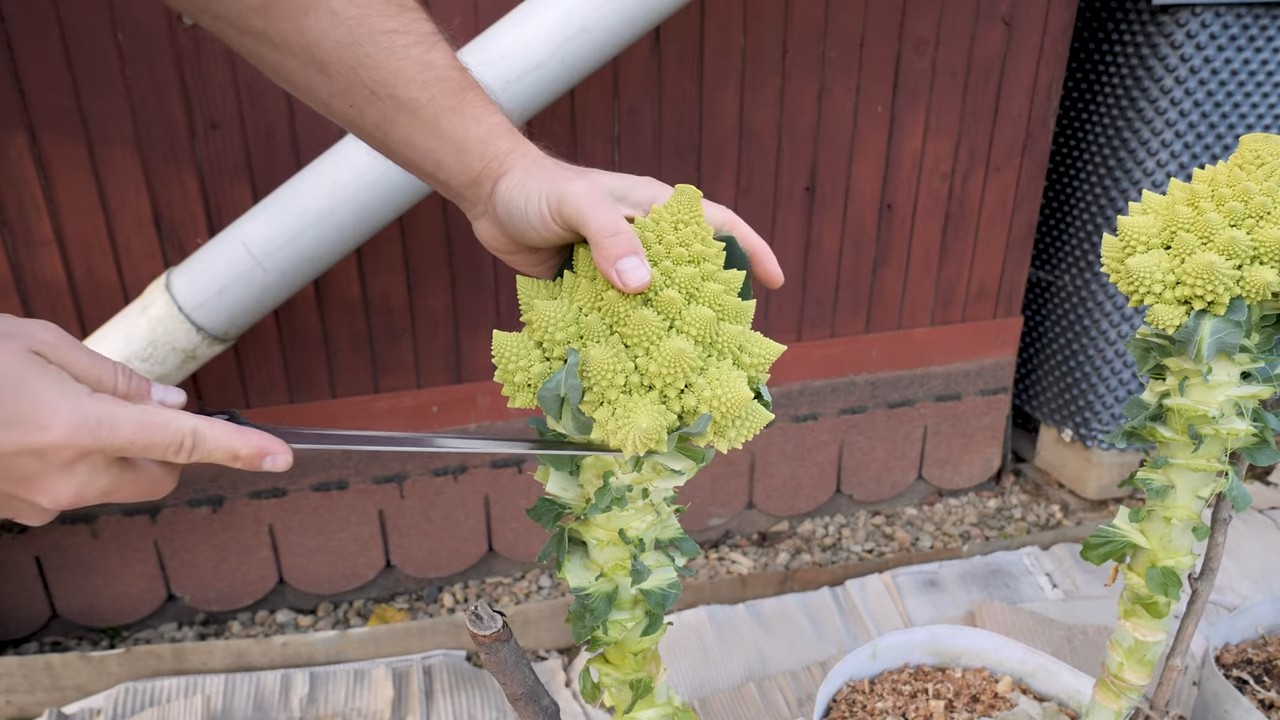
Growing Romanesco in Pots: A DIY Guide for the Urban Gardener
Hey there, fellow gardening enthusiasts! Ever dreamt of growing those mesmerizing, fractal-patterned Romanesco broccoli heads right on your balcony or patio? Well, dream no more! It’s totally achievable, even if you’re short on space. I’m going to walk you through everything you need to know to cultivate these beauties in pots. It might seem intimidating at first, but trust me, with a little patience and these simple steps, you’ll be harvesting your own Romanesco in no time.
Choosing the Right Pot and Soil
Before we even think about seeds, let’s talk about the foundation of our Romanesco garden: the pot and the soil. This is crucial for success!
* Pot Size Matters: Romanesco needs room to grow. We’re not talking about a tiny windowsill herb garden here. You’ll need a pot that’s at least 18 inches in diameter and 18 inches deep. A 20-inch pot is even better! This gives the roots plenty of space to spread out and support that developing head.
* Drainage is Key: Make sure your pot has drainage holes! Romanesco hates sitting in soggy soil. If your pot doesn’t have enough drainage, you can drill a few extra holes in the bottom.
* Soil Selection: Forget about using garden soil straight from the ground. It’s often too heavy and doesn’t drain well in pots. Instead, opt for a high-quality potting mix. Look for a mix that’s specifically formulated for vegetables. I like to use a mix that contains compost, peat moss (or coco coir as a sustainable alternative), and perlite or vermiculite for drainage.
* Soil pH: Romanesco thrives in slightly acidic to neutral soil, with a pH between 6.0 and 7.0. You can test your soil pH with a simple soil testing kit, which you can find at most garden centers. If your soil is too alkaline, you can amend it with sulfur or peat moss.
Starting Your Romanesco Seeds
Now for the fun part: getting those seeds started! You have two options here: starting seeds indoors or direct sowing them into your pot. I prefer starting indoors because it gives the seedlings a head start and protects them from pests and harsh weather.
* Timing is Everything: Romanesco is a cool-season crop, so you’ll want to start your seeds indoors about 4-6 weeks before the last expected frost in your area. If you’re direct sowing, wait until after the last frost.
* Seed Starting Supplies: You’ll need seed starting trays or small pots, seed starting mix, and a spray bottle.
* Sowing the Seeds: Fill your seed starting trays or pots with seed starting mix. Moisten the mix with the spray bottle. Sow the seeds about 1/4 inch deep. Gently cover the seeds with soil and mist again.
* Creating a Warm and Humid Environment: Cover the trays or pots with a clear plastic dome or plastic wrap to create a humid environment. Place them in a warm location, ideally around 70-75°F (21-24°C). A heat mat can be helpful if your home is cool.
* Light is Essential: Once the seedlings emerge (usually in about 5-10 days), remove the plastic cover and place them under grow lights or in a sunny window. If you’re using a window, rotate the seedlings regularly to prevent them from becoming leggy.
* Watering Carefully: Keep the soil consistently moist, but not soggy. Water from the bottom to avoid damping off, a fungal disease that can kill young seedlings.
Transplanting Your Seedlings
Once your seedlings have developed a few sets of true leaves (usually after about 4-6 weeks), it’s time to transplant them into their final pots.
1. Harden Off Your Seedlings: Before transplanting, you need to “harden off” your seedlings. This means gradually exposing them to outdoor conditions over a period of about a week. Start by placing them outside for an hour or two each day, gradually increasing the amount of time they spend outdoors. This will help them adjust to the sun, wind, and temperature changes.
2. Prepare Your Pot: Fill your pot with the potting mix we discussed earlier. Make a hole in the center of the pot that’s large enough to accommodate the root ball of your seedling.
3. Gently Remove the Seedling: Carefully remove the seedling from its seed starting tray or pot. Be gentle to avoid damaging the roots.
4. Transplant the Seedling: Place the seedling in the hole and gently backfill with soil. Make sure the top of the root ball is level with the soil surface.
5. Water Thoroughly: Water the seedling thoroughly after transplanting. This will help settle the soil and encourage root growth.
Caring for Your Romanesco Plants
Now that your Romanesco plants are in their final pots, it’s time to provide them with the care they need to thrive.
* Sunlight: Romanesco needs at least 6 hours of sunlight per day. Place your pot in a sunny location where it will receive plenty of direct sunlight.
* Watering: Water your Romanesco plants regularly, especially during hot, dry weather. The soil should be consistently moist, but not soggy. Check the soil moisture by sticking your finger into the soil. If the top inch of soil is dry, it’s time to water.
* Fertilizing: Romanesco is a heavy feeder, so you’ll need to fertilize it regularly. Use a balanced fertilizer that’s specifically formulated for vegetables. Follow the instructions on the fertilizer label. I like to use a liquid fertilizer diluted to half strength every two weeks.
* Pest Control: Keep an eye out for pests such as aphids, cabbage worms, and flea beetles. You can control these pests with insecticidal soap, neem oil, or by handpicking them off the plants.
* Weed Control: Keep the pot free of weeds. Weeds can compete with your Romanesco plants for nutrients and water.
* Mulching: Apply a layer of mulch around the base of the plant to help retain moisture, suppress weeds, and regulate soil temperature. Straw, wood chips, or shredded leaves are all good options for mulch.
* Supporting the Plant: As the Romanesco head develops, it can become quite heavy. You may need to provide support for the plant to prevent it from toppling over. You can use a stake or a tomato cage to support the plant.
Harvesting Your Romanesco
The moment we’ve all been waiting for! Harvesting your own homegrown Romanesco is incredibly rewarding.
* Timing is Key: Romanesco is ready to harvest when the head is firm and compact, and the florets are tightly closed. The head should be about 6-8 inches in diameter.
* Harvesting Technique: Use a sharp knife to cut the head from the plant. Leave a few inches of stem attached to the head.
* Enjoy Your Harvest: Romanesco can be eaten raw or cooked. It’s delicious steamed, roasted, or stir-fried. You can also use it in soups, stews, and salads.
Troubleshooting
Even with the best care, you might encounter some problems along the way. Here are a few common issues and how to address them:
* Yellowing Leaves: This could be a sign of overwatering, underwatering, or nutrient deficiency. Check the soil moisture and adjust your watering accordingly. If the soil is consistently moist, you may be overwatering. If the soil is dry, you may be underwatering. If the leaves are yellowing all over, it could be a sign of nutrient deficiency. Fertilize your plants with a balanced fertilizer.
* Stunted Growth: This could be caused by a number of factors, including poor soil, lack of sunlight, or pest infestation. Make sure your plants are getting enough sunlight and that the soil is well-draining. Check for pests and treat them accordingly.
* Bolting: Bolting is when the plant prematurely flowers. This is usually caused by hot weather or stress. Romanesco is a cool-season crop, so it’s important to plant it at the right time of year. If the weather is hot, try to provide some shade for your plants.
* Pest Problems: Aphids, cabbage worms, and flea beetles are common pests of Romanesco. You can control these pests with insecticidal soap, neem oil, or by handpicking them off the plants.
Extra Tips for Success
* Choose the Right Variety: Some Romanesco varieties are better suited for container gardening than others. Look for varieties that are compact and early-maturing.
* Rotate Your Crops: Don’t plant Romanesco in the same pot year after year. Rotate your crops to prevent soilborne diseases.
* Companion Planting: Plant companion plants alongside your Romanesco to help deter pests and attract beneficial insects. Good companion plants for Romanesco
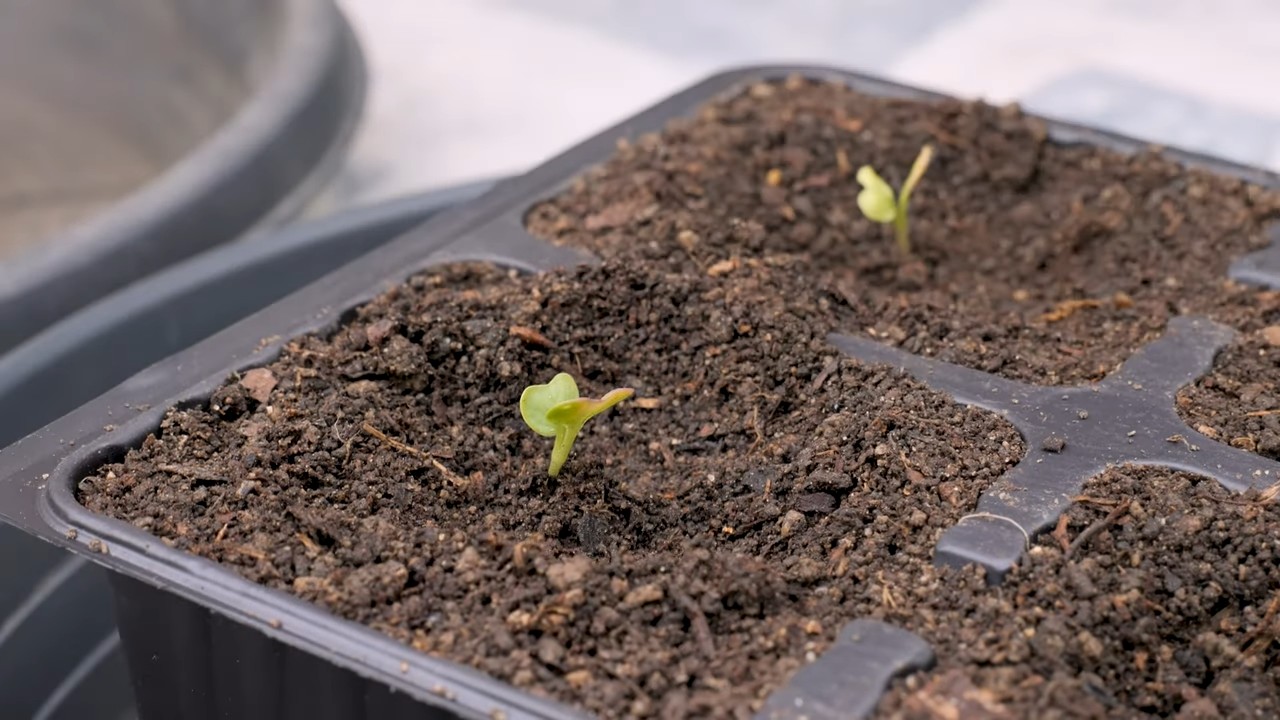
Conclusion
So, there you have it! Growing your own Romanesco in pots isn’t just a gardening experiment; it’s a gateway to experiencing the freshest, most vibrant, and uniquely beautiful vegetable imaginable. Forget the often-lackluster specimens you find at the grocery store. With this simple DIY trick, you’re unlocking the potential to harvest Romanesco heads bursting with flavor and visual appeal, right from your own patio or balcony.
This method is a must-try for several reasons. First, it democratizes Romanesco cultivation. No sprawling garden required! Even those with limited space can enjoy the satisfaction of nurturing this architectural marvel from seedling to harvest. Second, it gives you complete control over the growing environment. You can tailor the soil, watering, and sunlight to perfectly suit Romanesco’s needs, resulting in healthier, more productive plants. Third, and perhaps most importantly, it’s incredibly rewarding. Witnessing the intricate fractal patterns of the Romanesco florets develop is a truly awe-inspiring experience.
But don’t stop there! Feel free to experiment with different pot sizes. While we recommend a minimum of 15 gallons, larger pots can accommodate even more robust root systems and potentially lead to larger heads. Consider companion planting. Marigolds, for example, can help deter pests, while herbs like rosemary and thyme can enhance the flavor of your Romanesco. And if you’re feeling adventurous, try succession planting. Start a new batch of seedlings every few weeks to ensure a continuous harvest throughout the growing season.
Another variation to consider is the type of fertilizer you use. While a balanced, slow-release fertilizer is a great starting point, you can supplement with liquid seaweed or fish emulsion during the growing season to provide an extra boost of nutrients. Just be sure to follow the instructions on the product label to avoid over-fertilizing.
Don’t be intimidated by the perceived difficulty of growing Romanesco. This DIY trick simplifies the process and makes it accessible to gardeners of all skill levels. The key is to provide consistent care, monitor your plants regularly, and be patient. Romanesco takes time to mature, but the wait is well worth it.
We are confident that you’ll be amazed by the results. Imagine serving a freshly harvested Romanesco, grown with your own hands, to your family and friends. The vibrant color, the unique shape, and the delicious flavor will be a conversation starter and a testament to your gardening prowess.
So, what are you waiting for? Grab a pot, some soil, and a Romanesco seedling, and embark on this exciting gardening adventure. We encourage you to try this DIY trick and share your experiences with us! Post photos of your Romanesco creations on social media using #PotGrownRomanesco and let us know what tips and tricks you discovered along the way. We can’t wait to see your beautiful, homegrown Romanesco!
Frequently Asked Questions (FAQ)
What is the best time of year to plant Romanesco in pots?
The best time to plant Romanesco depends on your climate. In general, Romanesco prefers cooler weather. For spring harvests, start seeds indoors 6-8 weeks before the last expected frost. Transplant seedlings outdoors once the danger of frost has passed. For fall harvests, start seeds in mid-summer. Romanesco typically needs 75-90 days to mature, so plan accordingly. If you live in a region with mild winters, you may be able to grow Romanesco throughout the year.
What size pot is needed for growing Romanesco?
A minimum of 15 gallons is recommended for growing Romanesco in pots. This provides enough space for the plant’s root system to develop properly. Larger pots (20 gallons or more) are even better, as they can accommodate more robust growth and potentially lead to larger heads. Make sure the pot has drainage holes to prevent waterlogging.
What type of soil is best for Romanesco?
Romanesco prefers well-draining, fertile soil with a pH of 6.0 to 7.5. A good potting mix for Romanesco should contain a blend of compost, peat moss, and perlite or vermiculite. You can also amend your potting mix with slow-release fertilizer to provide essential nutrients throughout the growing season. Avoid using garden soil in pots, as it can become compacted and poorly drained.
How much sunlight does Romanesco need?
Romanesco needs at least 6 hours of direct sunlight per day. Choose a location for your potted Romanesco that receives plenty of sunlight. If you live in a hot climate, provide some afternoon shade to prevent the plants from overheating.
How often should I water Romanesco?
Water Romanesco regularly, especially during hot, dry weather. The soil should be kept consistently moist, but not waterlogged. Check the soil moisture level daily and water when the top inch of soil feels dry to the touch. Avoid overhead watering, as this can increase the risk of fungal diseases.
What are some common pests and diseases that affect Romanesco?
Common pests that affect Romanesco include aphids, cabbage worms, and flea beetles. Aphids can be controlled with insecticidal soap or neem oil. Cabbage worms can be handpicked or treated with Bacillus thuringiensis (Bt). Flea beetles can be deterred with row covers or diatomaceous earth. Common diseases that affect Romanesco include clubroot and black rot. Clubroot can be prevented by maintaining a soil pH of 7.0 or higher and by practicing crop rotation. Black rot can be prevented by using disease-free seeds and by avoiding overhead watering.
How do I know when Romanesco is ready to harvest?
Romanesco is ready to harvest when the head is firm and compact, and the florets are tightly closed. The head should be about 6-8 inches in diameter. Use a sharp knife to cut the head from the plant, leaving a few inches of stem attached.
Can I grow Romanesco from seed in pots?
Yes, you can grow Romanesco from seed in pots. Start seeds indoors 6-8 weeks before the last expected frost. Sow seeds 1/4 inch deep in seed starting mix. Keep the soil moist and warm. Once the seedlings have developed a few true leaves, transplant them into individual pots. Harden off the seedlings before transplanting them into their final pots outdoors.
What are some companion plants for Romanesco?
Good companion plants for Romanesco include marigolds, nasturtiums, rosemary, thyme, and dill. Marigolds and nasturtiums help deter pests. Rosemary and thyme can enhance the flavor of Romanesco. Dill attracts beneficial insects that prey on pests.
Can I grow Romanesco in containers indoors?
While it’s possible to grow Romanesco indoors, it can be challenging. Romanesco requires a lot of sunlight, so you’ll need to provide supplemental lighting. You’ll also need to ensure that the plants are properly pollinated. If you’re determined to grow Romanesco indoors, choose a sunny location and use grow lights to supplement natural sunlight. You may also need to hand-pollinate the flowers.


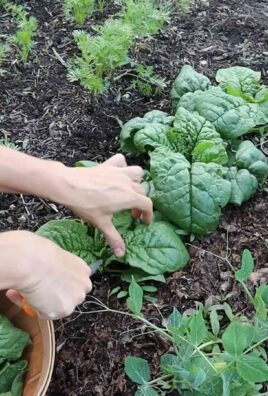
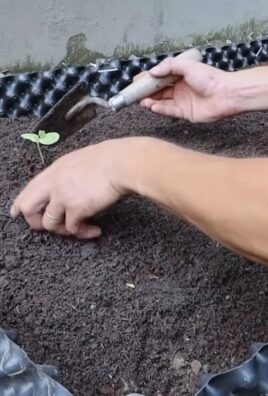
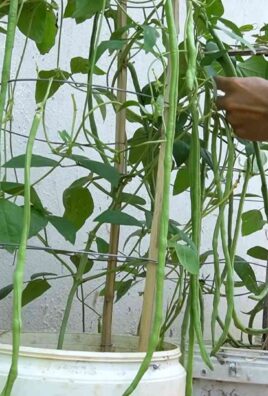
Leave a Comment